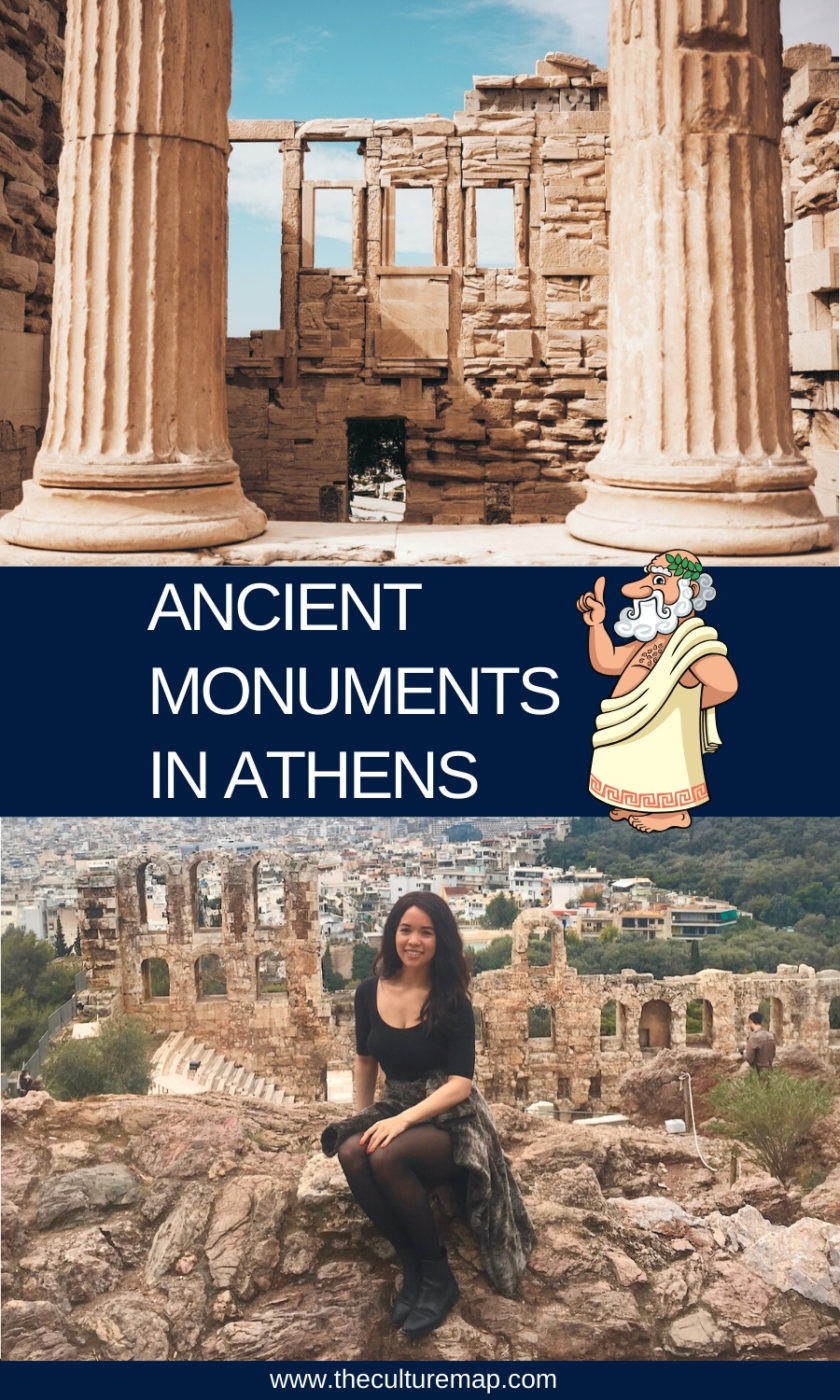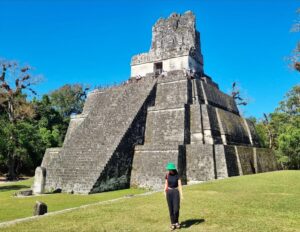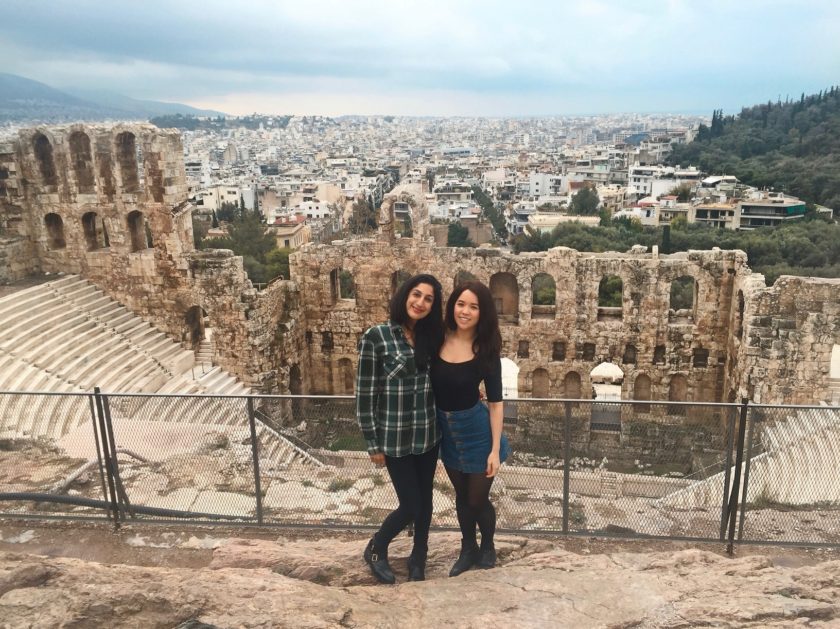
Athens, the Greek capital is synonymous with classical antiquities, thrilling tales and ancient ruins. Often known as the cradle of western civilisation, a trip to the city named after the goddess of wisdom and courage Athena, is a must for history lovers.
Before jumping into this post, I must admit history has never been a strong subject of mine. Growing up, I attended a local Bradfordian school where the teachers were probably too exhausted dealing with naughty kids (myself included) to make their lesson plans really engaging. I didn’t even study the subject at GCSE level. So put it this way, you wouldn’t choose me to answer the last question in the pub quiz if prize money were at stake! However, over the years, travelling has really helped fill in the gaps, and this is especially true for my visit to Athens.
Brief introduction to Ancient Athens
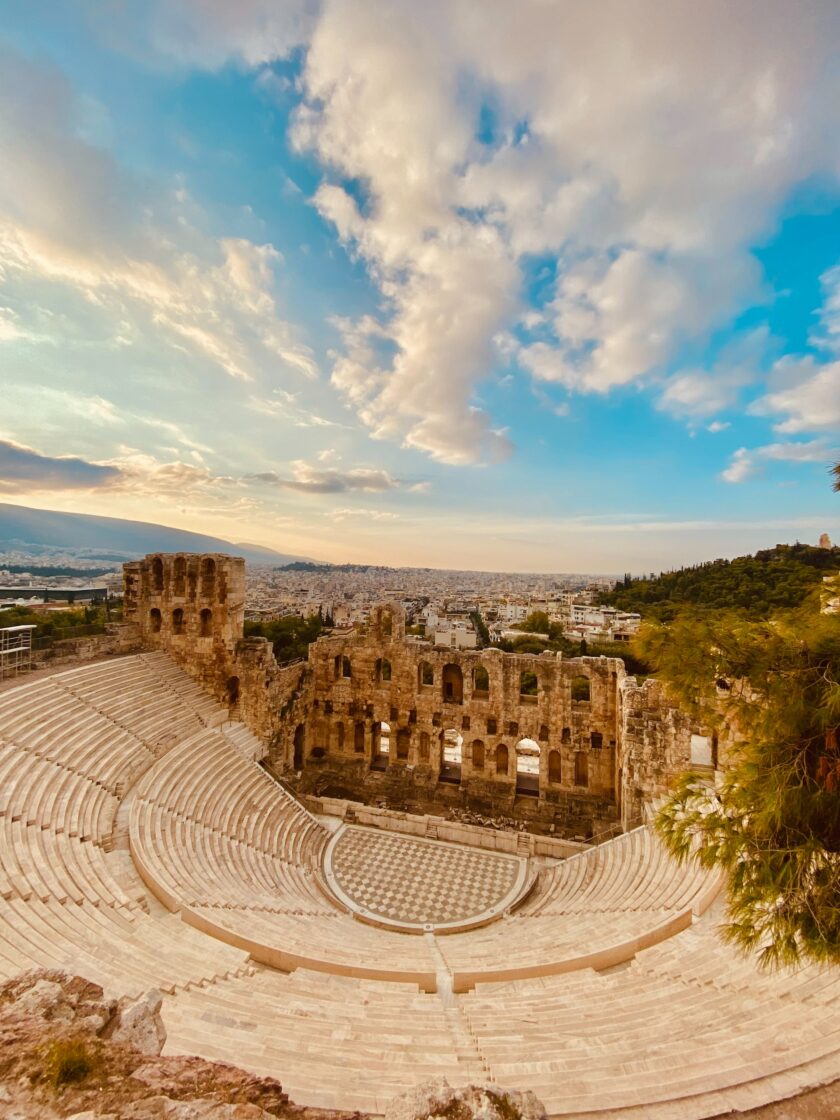
The history of Athens stretches back a long, long way. For over 3500 years the city has been continually inhabited and developed by humanity.
The Neolithic Period
The city was founded in the Neolithic period on top of the Acropolis (‘high city’). Its elevated position gave it a good defensible position should the city come under attack.
During this time, Athens belonged to the Mycenaeans, a civilisation which ruled from Southern Greece to the island of Crete. It was one the most advanced civilisations in the world, along with the Egyptian Empire, and the Hittite Empire who controlled Anatolia. Each region was rich in natural resources and societies prospered, with trade even going place between regions. Furthermore, the construction of great monuments and temples with incredible engineering were erected.
The Bronze Age
Then came the end of the Bronze Age in Greece, characterised by the collapse of the Mycenaean societies. That is, all apart from Athens which continued to be inhabited, albeit a smaller population. The Bronze Age collapse is one of histories greatest mysteries. Ancient civilisations that once thrived over thousands of years, crumbled to the ground in only a few decades. Archeologists found city after city burnt between 1200 BC – 1150 BC.
Various causes are attributed to the end of the Bronze Age such as ecological factors in the form of earthquakes and famines, and migration as a result of these factors. There’s also the theory of the Sea Peoples, which personally makes less sense to me, but I want to include it anyway.
How Athens survived is a mystery when most other major cities were wiped out. There is speculation that its natural defence and location could be a major contributing factor. Nevertheless most of its buildings were destroyed apart from some of the fortifications in the Acropolis, and others which survived were destroyed in the years that followed.
The Dark Ages
In a nutshell, The Greek Dark Ages followed the end of the Bronze Age and lasted roughly 400 years. It was indeed a dark time: international trade disappears, pottery becomes more primitive and the construction of great monuments and buildings seizes entirely. Many skills are also lost, and perhaps most tragic of all, the written words becomes almost extinct, which is why academics and archeologists find it difficult to piece together this part of history.
Archaic Greece
After the Dark Ages came the establishment of Archaic Greece which lasted for approximately 200 years, 700 – 480 BC. This is when things started to finally look up with developments in Greek politics, economics, international relations and culture. It laid the groundwork for the Classical period.
The Classical Period
Arguably the Classical period, which lasted 200 years (5th and 4th centuries BC) has had the greatest influence on Greek culture today, this includes the rebuilding of the Acropolis. Now let’s look at some of the ancient attractions of Athens that were built, namely during the Classical period and shortly after.
Acropolis
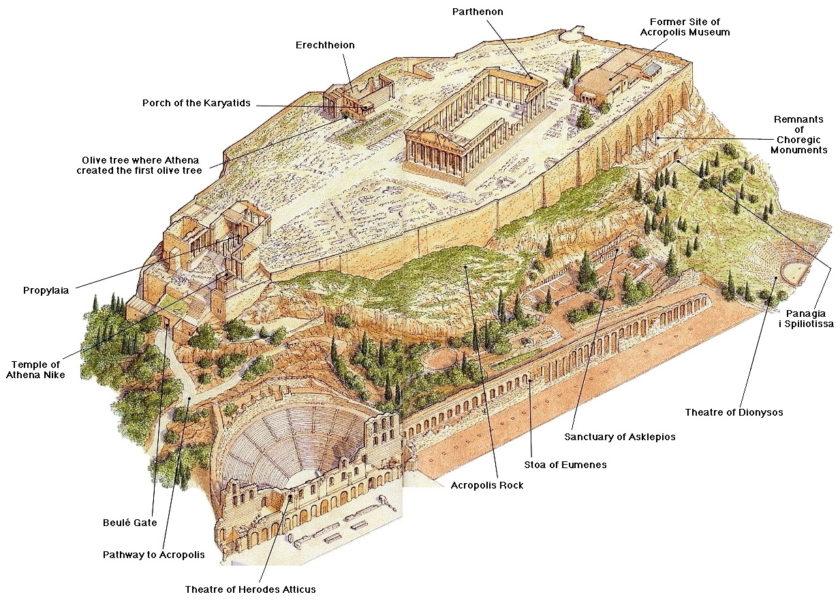
Perched high on a massive rock, stands the most famous landmark in Athens: the Acropolis. Here, 2400 years ago, the Greeks built an extraordinary complex of temples where they could worship their Gods. For years, restorers have been dismantling and rebuilding parts in search of answers from the past. These are some of the monuments you can find inside:
Propylaea
Propylaea is the name given to a grand gateway to a specific space, usually to a temple or religious complex. They provide a symbolic partition between the secular and religious parts of a city. The most famous and best preserved example of this type of structure is the magnificent Propylaea at the Acropolis.
Though it was largely destroyed by what was believed to be lightening or an explosion from a canon shot which ignited the gun powder stored inside, 20th and 21st century restoration work has ensured that the Propylaea has regained something of its former glory. It still fulfils its original function for the modern visitor as a breathtaking entrance to the architectural wonders of the acropolis. Before you head through the entrance, don’t forget to turn your head to take in the epic panorama seen from the steps.
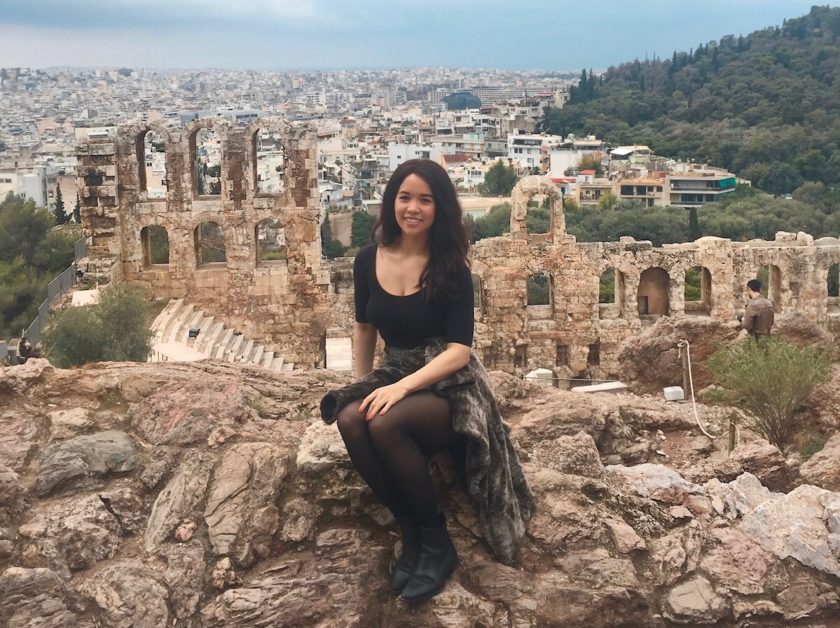
The Odeon of Herodes Atticus
Located at southwest slope of Acropolis, this extraordinary stone amphitheatre is a shining example of a glorious era of art, music and drama from ancient Greek culture. It was built in 161 AD by a wealthy merchant named Herodes Atticus in memory of his wife.
In 1950 the amphitheatre was restored with meticulous care and since then the Athens Festival has been held here every year. An array of international musician have walked on the stage, from Diana Ross and Patti Smith to Yann Tiersen and Florence and the Machine. Although you can’t go inside unless you have ticket to see a performance, you can get an amazing bird’s-eye view from inside the Acropolis (depicted above).
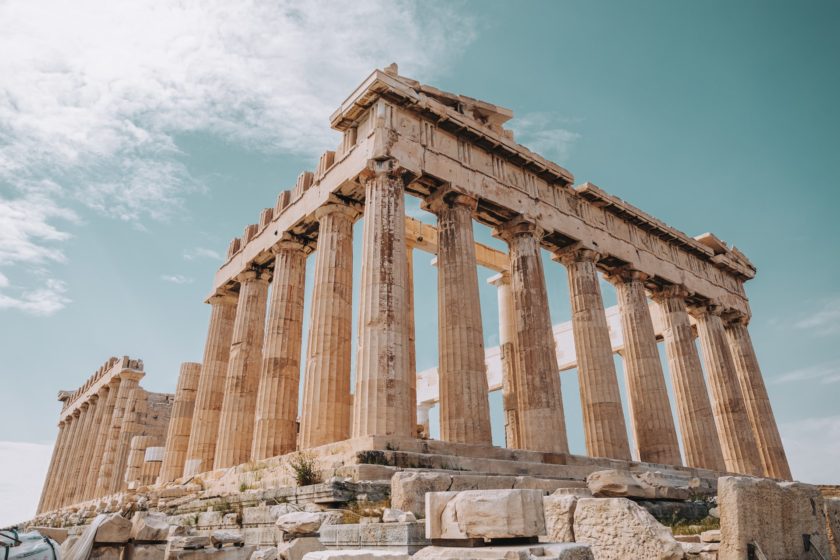
Parthenon
If there were only one monument synonymous with Athens it would be the Parthenon. A former temple, dedicated to the goddess Athena, it stands as a testament to the amazing engineering and structural skills of the ancient Greeks.
This historic ruin was created in 447 BC during the Classical Period. In its glory days, it was a solid building, but through the well-preserved ruins that remain, its not hard to imagine its former grandeur. The views of Athens from here are stunning too, especially of Mount Lycabettus, which is the tallest hill of the city. Legend says, Athena created it when she dropped a limestone mountain she had been carrying from the Pallene peninsula for the construction of the Acropolis after the box holding Erichthonius was opened by the daughters of Cecrops.
Temple of Hephaestus
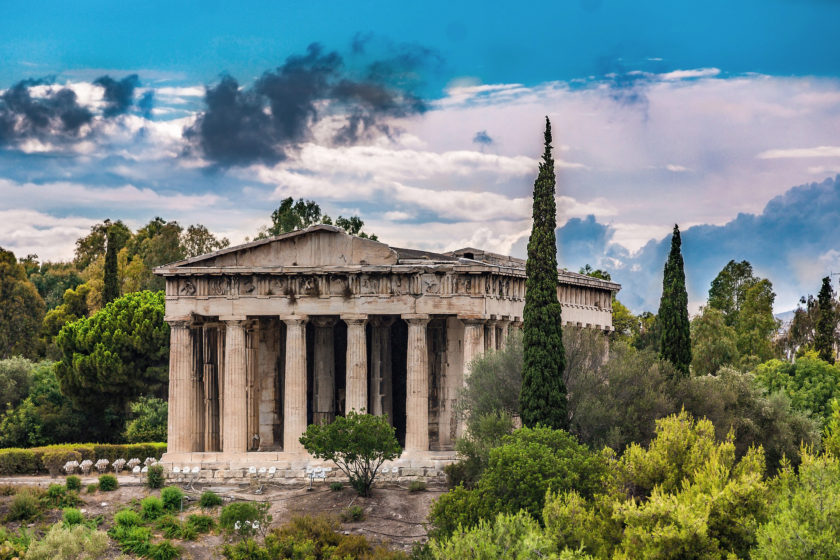
Located near the Acropolis on the top of Kolonos Agoraios hill, is the Temple of Hephaestus, dedicated to a god of fire and metalworking. It was designed by Ictinus and built in the 5th century BC with marble from Mount Penteli.
It is one of the best-preserved Greek temples due to it being in use more than the other monuments on this list – it served as an orthodox church from the seventh century until 1834.
The temple showcases most of the Dorian architecture in tact, with 6 columns on the ends and 13 along each side. On the eastern pediment are scenes depicting the labours of Hercules.
Kerameikos Cemetery
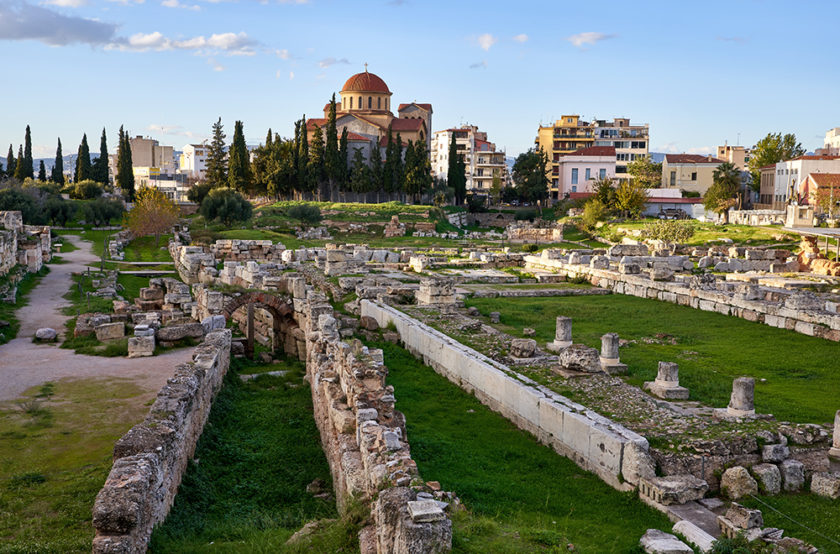
Kerameikos cemetery is located in downtown Athens. This area was named after the potters who originally settled here several thousand years ago. The site was discovered in 1861 by archaeologists who were excavating within that area.
The cemetery contains some interesting sculptural tombstones, a small museum and historical artefacts such as the remains of a city wall that was built around 479 BC.
The site also harbours the ruins of the road that was once used in the Panathenaic procession.
Panathenaic Stadium
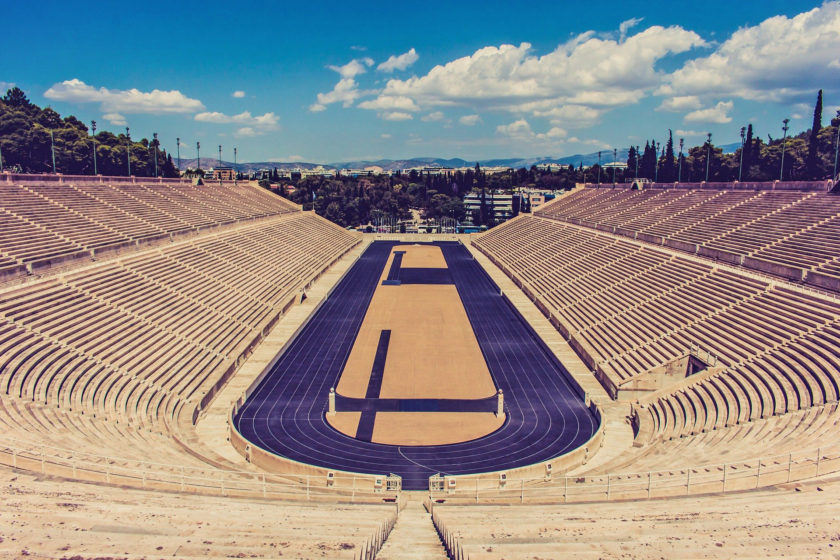
This incredible stadium in Athens is the first modern Olympic stadium built in 144 AD and made entirely of marble, the only one of its kind in the world.
For hundreds and hundreds of years, the stadium was largely abandoned. But in 1869 it was excavated and hosted the first revival of the Olympic Games in the 1870s. More recently it was the finish line for the marathon in the 2004 Athens Olympics and is still open to visitors. In addition, it is located behind the national gardens so why not visit both attractions together?
I hope you enjoyed looking at some of these ancient monuments me. There are many more that wait to be explored.
Will you be visiting Athens to see more of where Western Civilisation all began?
Further reading: A Food Lover’s Guide to Athens
Guided tour of the Acropolis
For a comprehensive exploration of the Acropolis, I recommend joining a guided tour. With the help of an expert in the field, you’ll peel back the many layers of this fascinating landmark through the pages of history, mythology, and storytelling.
Where to stay in Athens
Staying near the Acropolis in Athens is a great idea as it allows you to easily access this iconic ancient site and explore the historic Plaka neighborhood. There are several options for accommodation in the vicinity of the Acropolis, ranging from luxury hotels to budget-friendly choices. Here are some popular areas and specific hotels to consider:
Plaka
The Plaka neighborhood is right at the foot of the Acropolis and offers a charming atmosphere with narrow streets, traditional Greek tavernas, and proximity to major attractions. Some Plaka hotels to consider are:
- Electra Palace Athens (Luxury)
- AthensWas Design Hotel (Boutique)
- Plaka Hotel (Best value)
Koukaki
This beautiful neighbourhood is located just south of the Acropolis and comparatively offers a quieter atmosphere. It’s known for its white buildings and bohemian vibes with boutique shops. If you’re on a budget, you’ll also find more affordable accommodation in this area too. Some options in Koukaki are:
- Hera Hotel (I stayed here and would recommend! It’s a short walk from the Acropolis Museum and the South exit of the Acropolis)
